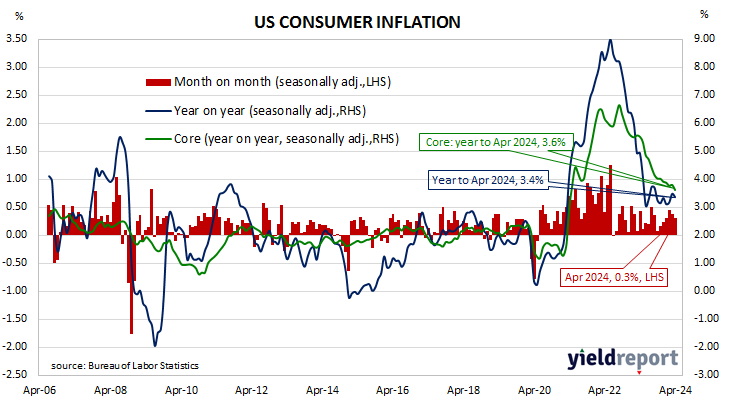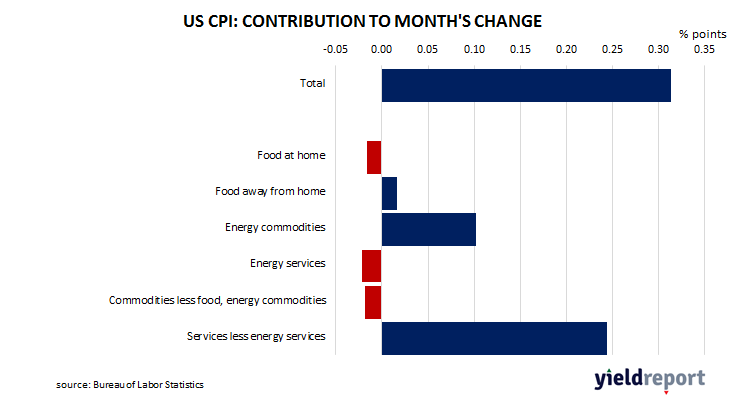Summary: US CPI up 0.4% in April, less than expected; annual inflation rate slows from 3.5% to 3.4%; “core” rate also up 0.3%, up 3.6% over year; Westpac: housing costs continue as one of main drivers of US inflation; Treasury yields fall significantly; rate-cut expectations firm; prices of non-energy services main driver again.
The annual rate of US inflation as measured by changes in the consumer price index (CPI) halved from nearly 3% in the period from July 2018 to February 2019. It then fluctuated in a range from 1.5% to 2.0% through 2019 before rising above 2.0% in the final months of that year. Substantially lower rates were reported from March 2020 to May 2020 and they remained below 2% until March 2021. Rates then rose significantly before declining from mid-2022.
The latest US CPI figures released by the Bureau of Labor Statistics indicated seasonally-adjusted consumer prices rose by 0.3% on average in April. The increase was less than the 0.4% which had been generally expected as well as March’s 0.4% rise. On a 12-month basis, the inflation rate slowed from 3.5% to 3.4%.
“Headline” inflation is known to be volatile and so references are often made to “core” inflation for analytical purposes. The core prices index, the index which excludes the more variable food and energy components, also increased by 0.3% on a seasonally-adjusted basis over the month, in line with consensus expectations. The annual growth rate slowed from March’s revised rate of 3.8% to 3.6%.
“It was worth noting that the April inflation data revealed shelter inflation remained high at 5.5% on an annual basis and the monthly increase stayed steady at 0.4%,” said Westpac Business Bank Chief Economist Besa Deda. “Housing costs continue to be one of the main drivers of inflation in the US.”
US Treasury bond yields fell significantly across the curve on the day. By the close of business, 2-year and 10-year Treasury yields had both shed 10bps to 4.72% and 4.34% respectively while the 30-year yield finished 9bps lower at 4.50%.
In terms of US Fed policy, expectations of a lower federal funds rate in the next 12 months firmed a little, with at least three 25bp cuts currently factored in. At the close of business, contracts implied the effective federal funds rate would average 5.32% in June, a touch less than the current spot rate, 5.315% in July and 5.185% in September. May 2025 contracts implied 4.465%, 86bps less than the current rate.
The largest influence on headline results is often the change in fuel prices. Prices of “Energy commodities”, the segment which contains vehicle fuels, increased by 2.7% and contributed 0.10 percentage points to the total. However, prices of non-energy services, the segment which includes actual and implied rents, again had the largest effect on the total, adding 0.24 percentage points after increasing by 0.4% on average.



